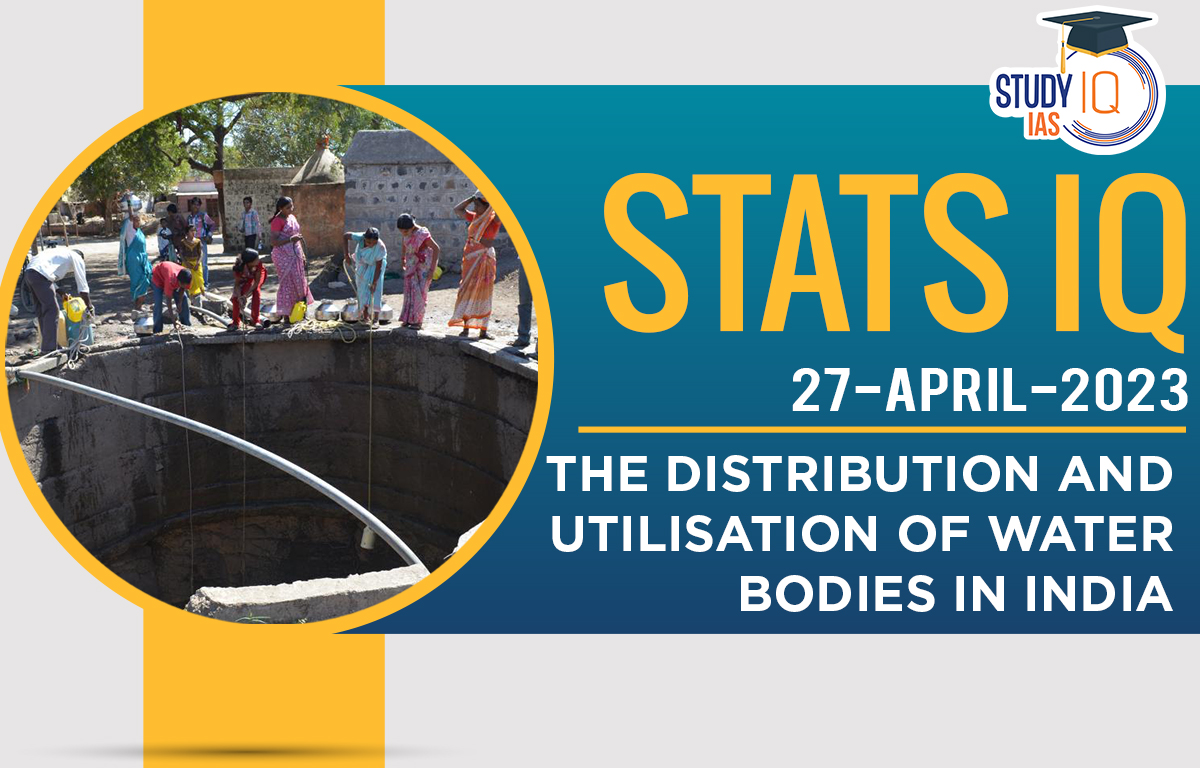Context: The Ministry of Jal Shakti has launched the first census of water bodies in India, which throws light on the number of water bodies in the countries.
Defining water bodies
- The document designates water body as any natural or man-made structure used for storing water for various purposes, such as irrigation, industry, fish farming, domestic use, recreation, religious activities, and groundwater recharge
- Any structure that collects and stores water from melting ice, streams, springs, rain, or drainage from residential or other areas, or stores water diverted from a stream, nala, or river, is also considered a water body.
Categories of water bodies
- Ponds comprise 59.5%
- Tanks at 15.7%
- Reservoirs at 12.1%
- Water conservation projects such as percolation tanks and check dams at 9.3%
- Lakes at 0.9%
- Other types at 2.5%
State-wise distribution of water bodies
- West Bengal has the highest number of ponds and reservoirs.
- Andhra Pradesh hosts highest number of tanks.
- Tamil Nadu has the highest number of lakes.
- Maharashtra is leading in terms of water conservation initiatives.
Usage pattern of water bodies
- The majority of them are used for fish farming, with other uses being irrigation, replenishing groundwater, and providing water for household and drinking needs.
- About 55.5% are dedicated to fish farming
- 16.5% to irrigation
- 12.1% to groundwater replenishment
- 10.1% to domestic and drinking water needs
- Remaining is used for recreational, industrial, religious and other purposes.
State-wise pattern of usage
- 50% of the water bodies are used for fish farming in Arunachal Pradesh, Sikkim, Tripura, Mizoram, Nagaland, Meghalaya, Assam and the eastern States of West Bengal and Odisha.
- Over 50% of the water bodies are used for irrigation in Gujarat, Telangana, Karnataka and Jharkhand.
- More than 50% are used for drinking in Manipur and Himachal Pradesh.
- Over 10% of the water bodies in Sikkim are used for recreational purposes.
- Over 50% of the water bodies in Uttarakhand, Punjab and Maharashtra are used for groundwater recharge.
- Industrial usage of water bodies is minimal in all the States.
Urban and rural distribution
- Over 97.1% of water bodies can be found in rural regions while only 2.9% are located in urban areas.
Miscellaneous
- Use: About 83.7% of water bodies are currently in use, while the rest are unused due to factors such as construction, siltation, irreparable damage, and industrial effluents.
- Encroachment: A total of 1.6% water bodies have been encroached upon, of which 67.6% are ponds, 21% are tanks, and 4.5% involve water conservation schemes, check dams, or percolation tanks.
- Ownership: Out of the total water bodies, 55.2% are privately owned; the rest are publicly owned.


 Nipah Virus (NiV): Structure, Testing Me...
Nipah Virus (NiV): Structure, Testing Me...
 Elon Musk’s America Party: A New Chapt...
Elon Musk’s America Party: A New Chapt...
 India and Trinidad and Tobago: Strengthe...
India and Trinidad and Tobago: Strengthe...





















